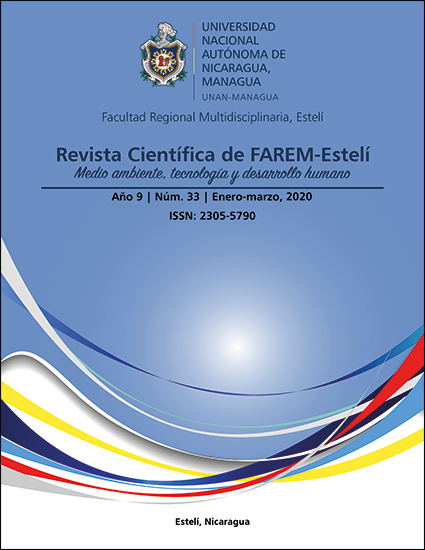Determination of the degree of luminous pollution resulting from artificial lights in the western sector of the city of Managua, Nicaragua. Period December 2016 to January 2017
DOI:
https://doi.org/10.5377/farem.v0i33.9612Keywords:
luminous pollution, luminaires, Rayleigh scattering, sky brightnessAbstract
This study aims to take the first steps to quantify light pollution as a result of artificial lighting in the western area of the city of Managua, Nicaragua. The degree of light pollution was assessed by measuring Rayleigh’s scattering of artificial light over the night sky. On-site measurements were performed with the Unihedron Sky Quality Meter (SQM-L) photometer along the main avenues of the western part of the Managua city on new moon and clear sky nights between December 2016 and January 2017. With this data, the first map of the spatial distribution of the night sky brightness in the western part of the city of Managua was developed and a surface brightness of 16.45 mag/arcsec2 was obtained. This value classifies the brightness of the Managua sky as Class 6: Glow of Urban Sky according to the Unihedron scale and red level according to the Bortle scale. In addition, satellite images from the Defense Meteorological Satellite Program (DMSP) were used to analyze the growth of Managua artificial lighting between 1992 and 2013.



